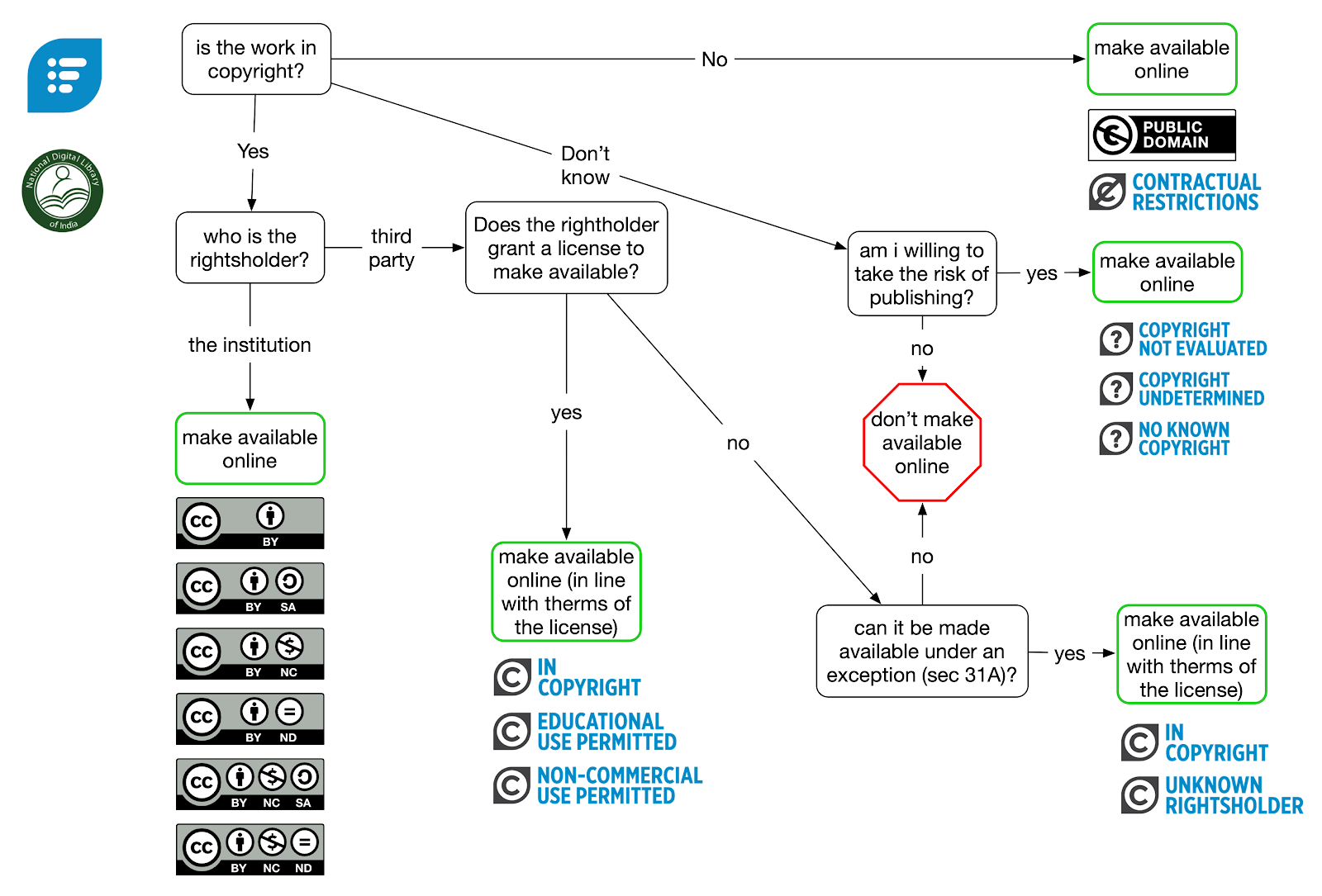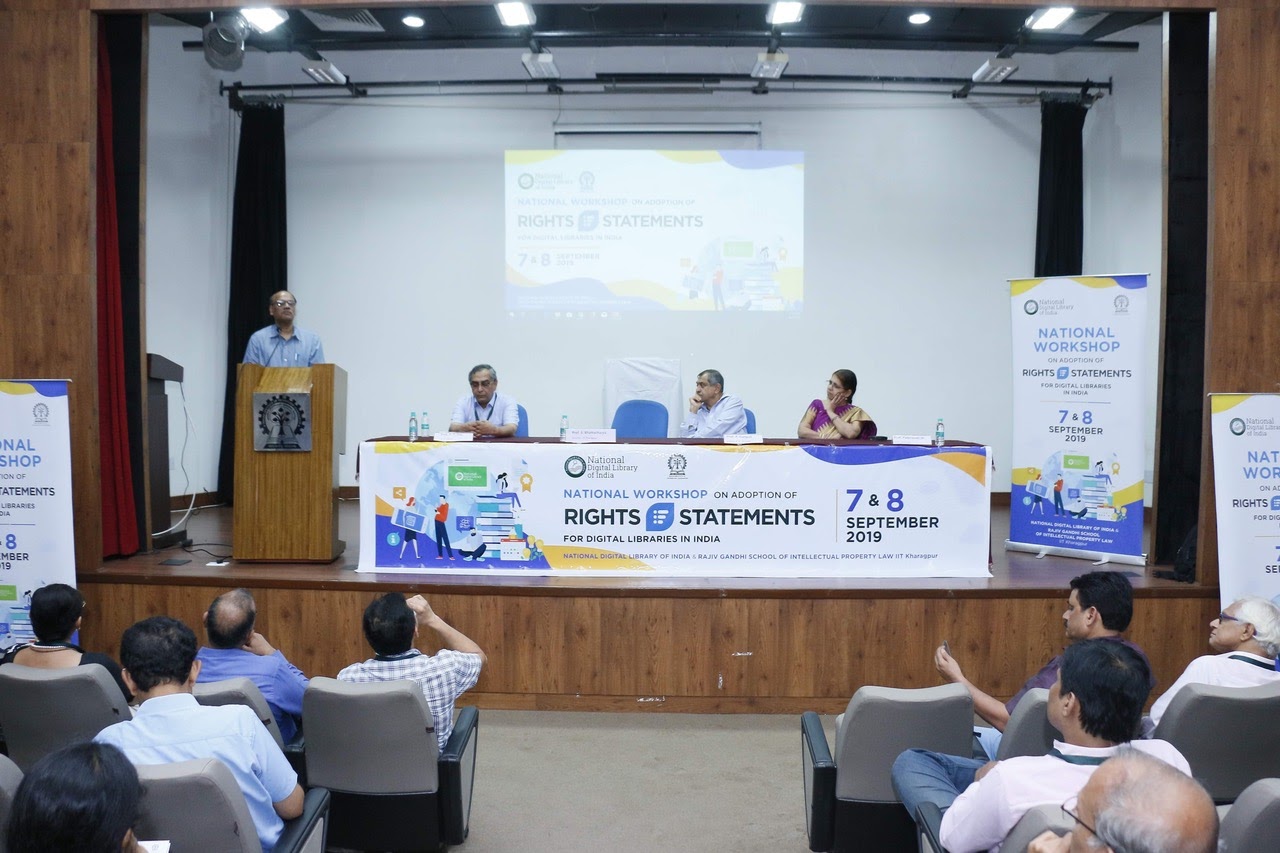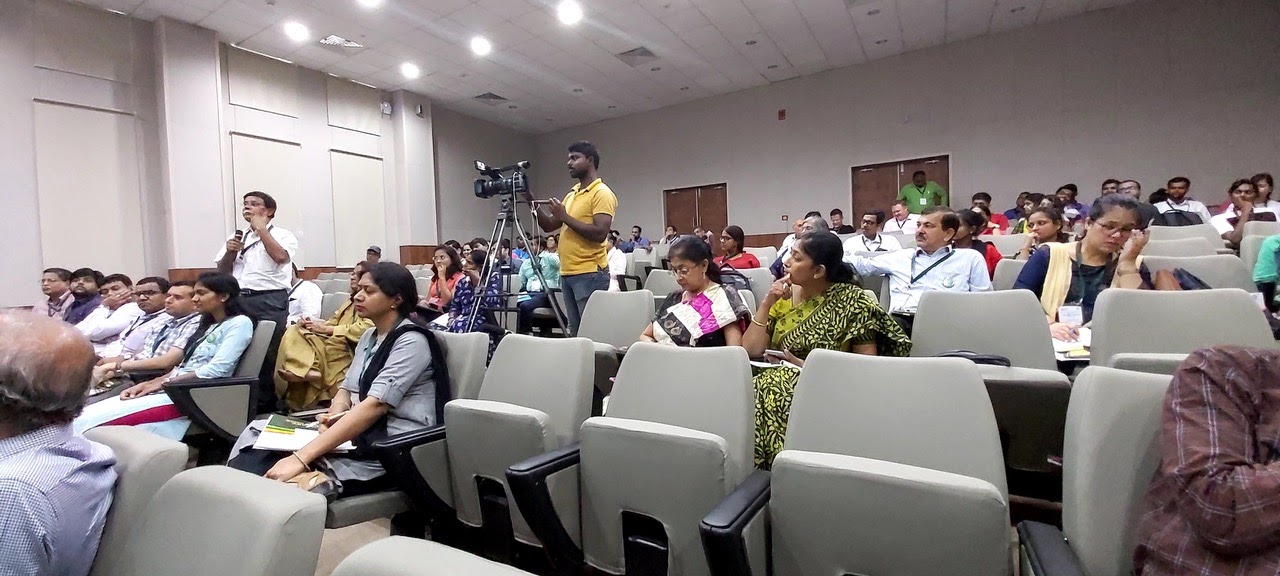Adopting the Rights Statements in India: a Report on the National Workshop
The National Digital Library of India (NDLI), partner in the rights statements consortium, has been working to promote the use of rights statements by cultural heritage institutions in India. As part of the efforts to raise awareness on the benefits of using standardised rights information, the NDLI and the Rightsstatements Consortium organised a national workshop from 6 to 9 September, led by Prof. Partha Pratim Das (NDLI), with Greg Cram (NYPL) and Paul Keller (Europeana) providing expertise on behalf of the RS.org consortium.
For many in the Indian cultural heritage sector, it was the first opportunity to learn about Rights Statements and ask about the value of making rights status determinations. The workshop also addressed the question of rights research and use of copyrighted works by cultural heritage institutions under exceptions and limitations.
Although the goal of the event was to increase the knowledge on the Rights Statements, determine if they would work within the Indian context, and understand why using standardized statements helps users, the workshop has also proven very useful to the Rights Statements Consortium. We now have a better understanding on how to support our members and those interested in implementing the rights statements.
The following report prepared by Greg Cram and Paul Keller provides a detailed look at the event and highlights the main outcomes.
Report from the workshop on the adoption of Rights Statements for digital libraries in India
By Greg Cram and Paul Keller. Photos by Shibabroto Banerjee. Flowchart by Paul Keller
From 6 to 9 September rightsstatements.org consortium partner National Digital Library of India (NDLI) organized a national workshop on the adoption of Rights Statements for digital libraries in India. The event took place on the campus of the Indian Institute of Technology in Kharagpur in West Bengal where the main NDLI offices are located. The workshop consisted of two parts, an invitation only pre-workshop brainstorm followed by the actual workshop which was open to the public.
Pre-workshop brainstorm
The pre workshop brainstorming session brought together key individuals from the legal community, NDLI and selected GLAMs for an in-depth discussion in preparation of the actual workshop. After a welcome note by Prof. Partha Pratim Chakarabarti, there were introductory presentations by Prof. Partha Pratim Das (NDLI), Paul Keller and Greg Cram (rightsstatements.org). Paul Keller’s presentation focused on the history and details of the statements, while Greg Cram’s presentation focused primarily on the adoption at institutional and national levels. These presentations generated a lot of feedback, questions and discussion. The majority of these centered on issues related to the copyright status of works, exceptions and limitations in Indian law, and rights clearance.
In a subsequent presentation Prof. Prabuddha Ganguli & Prof. Shreya Matilal discussed the “Indian Copyrights Act: Overview & its Limitations in the Digital Era”. One part of this presentation focussed on copyright exceptions relevant for Libraries in India. The second part was an analysis of the applicability of the existing rights statements in the Indian context. The analysis concludes that the majority of the statements are applicable in India (the exception being the InC-OW-EU and the NoC-US statement). The remainder of the statements are compatible with the Indian copyright law, and could be adopted by the NDLI. The outcome of this analysis validates the design approach followed by rightsattenments.org: All generic (i.e non-jurisdiction specific) statements are likely to work in the Indian context.
After an additional presentation by the Registrar of Copyrights, Mr. Hoshiar Singh, the subsequent discussion again centered on a set of broader issues related to copyright, including rights clearance best practices, the rights status of metadata, the desirability of restrictive conditions when sharing works and the fitness for purpose of the Indian copyright law when it comes to digital activities of Libraries.
On the morning of the 2nd day of the pre-workshop brainstorm participants from the GLAM sector presented their activities online activities and addressed copyright related challenges they were facing. These presentations confirmed the initial impression that the application of the rights statements in the NDLI context cannot be seen separately from the wider issues related to copyright faced by cultural heritage institutions.
In the summary session Prof. Prabuddha Ganguli presented a plan forward. The key element of this is the creation of a copyright and digitization guide for libraries to be produced by the NDLI in collaboration with the Rajiv Gandhi School of Intellectual Property Law at IIT Kharagpur. This guide will focus on rights review, clearance and labeling and would identify best practices. Prof Ganguli proposed to have the guidelines validated by the Indian judiciary to give more certainty to the library community.
The following flowchart that was produced at the end of the session summarizes the general understanding of a combined rights clearance and rights labelling approach:

National Workshop
The public workshop on the afternoon of the 7th and on the 8th of September was the first opportunity for many attendees to learn about Rights Statements and ask questions about the value of making rights status determinations. Attendees of several cultural heritage organizations from across India joined the attendees of the pre-workshop brainstorming session. Students from the law school also sat in to listen to the conversation. After opening the meeting, Prof. Partha Pratim Das spelled out the objectives of the workshop. The stated goal was to learn more about Rights Statements, determine if they would work within the Indian context, and understand why using standardized statements helps users.

Profs. Prabuddha Ganguli and Shreya Matilal presented their findings on the Rights Statements and their fitment for purpose in India. After walking the attendees through some basic copyright fundamentals, there were many questions about copyright law generally. The volume and intensity of the questions underscored the need for simple, clear summaries of and best practices for copyright. There was a lot of interest in better understanding the exceptions and limitations in Indian law that cultural heritage organizations could rely on to make their collections more broadly available to the public.
Paul Keller and Greg Cram rehashed their presentation, incorporating feedback from the prior day’s performances.
On the second day, representatives from cultural heritage institutions shared information about their organization, their collection, and whether they would be willing to adopt adding a rights statement to their digitized objects. Most institutions expressed their intention to adopt rights labeling. Some institutions identified hurdles to adoption, such as training for those working on digital projects or lack of technical infrastructure to support a rights determination field.

Professors Ganguli and Das then discussed what the next steps were to be for NDLI and the participants. Professor Ganguli offered to create a handbook of copyright for librarians and archivists. In addition to the handbook, the professors suggested creating a set of regional meetings to spread the word about rightsstatements.org and the benefits to adoption.
Takeaways
When talking with participants after the session closed, it appeared their knowledge of copyright and the rights statements increased each day. There was excitement for the benefits that rights labeling present for users of cultural heritage institutions.
However, the implementation of the statements cannot be seen as a purely technical issue that can be addressed separately from rights evaluation. From the perspective of the GLAMs participating in the Workshop it seems that rights evaluation is a more ugent topic than rights labelling.
The discussions during both the workshop and the brainstorm were strikingly similar to discussions that have taken place at DPLA and Europeana at earlier stages of these projects. As with European and American cultural heritage institutions, Indian institutions expressed a need and desire for copyright education to provide the basis for adoption of right labeling.